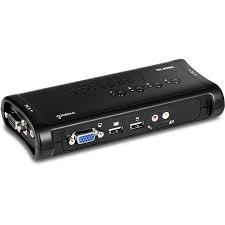KVM Switch Market Pain Points Hindering Growth and Widespread Adoption
The KVM switch market plays a crucial role in enabling centralized control of multiple computers or servers from a single set of peripherals. While the technology has proven essential in data centers, broadcasting environments, manufacturing, and enterprise IT infrastructure, the market faces several enduring challenges. These pain points are hampering broader adoption and limiting growth opportunities for both manufacturers and end users.
This article explores the most significant pain points affecting the KVM switch market, analyzing how these issues impact product usability, market scalability, and the overall customer experience.

Compatibility Limitations Across Devices
One of the most pressing pain points in the KVM switch market is device and interface compatibility. Many KVM switches struggle to support the wide variety of hardware and software systems in modern IT environments. For instance, new-generation devices may use USB-C, HDMI, or DisplayPort interfaces, while legacy systems rely on VGA, PS/2, or DVI.
The lack of universal compatibility creates a complex setup process, forces the use of adapters, and results in inconsistent performance. These integration challenges discourage some businesses from adopting KVM switches, especially those seeking plug-and-play simplicity.
Performance and Latency Issues
In time-sensitive environments like broadcasting, industrial automation, and real-time monitoring, latency and performance lag are critical issues. Analog KVMs may provide low latency, but they lack remote management features. On the other hand, IP-based KVMs can introduce latency during video or keyboard/mouse transmission, particularly when handling high-resolution content or long-distance connections.
Users often experience lag in cursor movement, delays in keystroke recognition, or screen flickering, which significantly affects productivity and precision. These performance inconsistencies present a major barrier to deployment in mission-critical applications.
Complex Installation and Configuration
Although KVM switches aim to simplify IT management, initial setup and ongoing configuration can be complex. In environments with dozens or hundreds of devices, managing cable routing, power supply, network configuration, and firmware updates is time-consuming and often requires trained personnel.
This high level of technical complexity deters smaller organizations or those with limited IT resources from adopting KVM solutions. Customers often demand simplified interfaces and guided installation processes, but many existing solutions fall short of these expectations.
Limited Scalability for Growing Infrastructures
Scalability is another ongoing concern in the KVM switch market. Many traditional systems are designed for static environments and do not scale well as businesses grow. Adding more servers, users, or workstations often requires significant hardware upgrades or complete system overhauls.
In fast-growing industries or companies expanding their data infrastructure, this lack of flexible scalability becomes a serious pain point. Without modular, future-proof designs, KVM switches struggle to keep pace with evolving enterprise needs.
Inadequate Support for Virtualized Environments
As organizations increasingly adopt virtual desktop infrastructure (VDI) and cloud-native systems, the inability of many KVM switches to integrate with virtualized environments becomes a critical limitation. Traditional KVM switches are built for physical system access and offer limited or no functionality when managing virtual machines.
This shortcoming leaves a gap between physical and digital IT management, forcing companies to adopt additional tools for virtualization control—thus increasing costs and system complexity.
High Costs for Advanced Solutions
Cost remains a significant barrier, especially for small and mid-sized enterprises. While entry-level analog KVM switches are affordable, advanced IP-based models with multi-user access, high-resolution support, and remote capabilities can be prohibitively expensive. Total cost of ownership increases when factoring in maintenance, support services, network integration, and potential licensing fees.
For businesses operating on tight IT budgets, the price-performance ratio of high-end KVM systems may not justify the investment, especially when alternative software-based solutions are available.
Security and Compliance Concerns
As remote management becomes the norm, security vulnerabilities in KVM switches have come under scrutiny. Older analog models lack encryption, while some IP-based devices are susceptible to cyberattacks if not properly configured. Industries with strict compliance requirements—such as healthcare, finance, and defense—may avoid KVM systems that fail to meet security standards.
Additionally, inadequate support for secure protocols, multi-factor authentication, and audit logging can deter adoption among security-conscious organizations. This lack of robust cybersecurity features remains a pain point for vendors trying to serve sensitive sectors.
Limited Vendor Support and Product Fragmentation
Finally, the market suffers from fragmentation and inconsistent vendor support. With numerous players offering a wide array of models, firmware versions, and feature sets, it can be difficult for customers to identify solutions that meet their needs. Inadequate post-sales support, slow firmware updates, and lack of training materials further compound user frustration.
This fragmented landscape often results in product interoperability issues, support delays, and vendor lock-in, making customers hesitant to invest in new or unfamiliar KVM systems.
Conclusion
Despite their longstanding value in IT and industrial applications, KVM switches face several persistent pain points that hinder wider market adoption and customer satisfaction. Issues related to compatibility, latency, complexity, scalability, cost, security, and vendor support continue to limit the technology’s appeal, especially in modern hybrid and virtualized environments.
For the KVM switch market to achieve sustainable growth, manufacturers must address these challenges head-on by offering more user-friendly, secure, scalable, and cost-effective solutions. Only through innovation and customer-centric design can the market overcome its current limitations and realize its full potential in the digital era.
- Art
- Causes
- Crafts
- Dance
- Drinks
- Film
- Fitness
- Food
- Giochi
- Gardening
- Health
- Home
- Literature
- Music
- Networking
- Altre informazioni
- Party
- Religion
- Shopping
- Sports
- Theater
- Wellness


